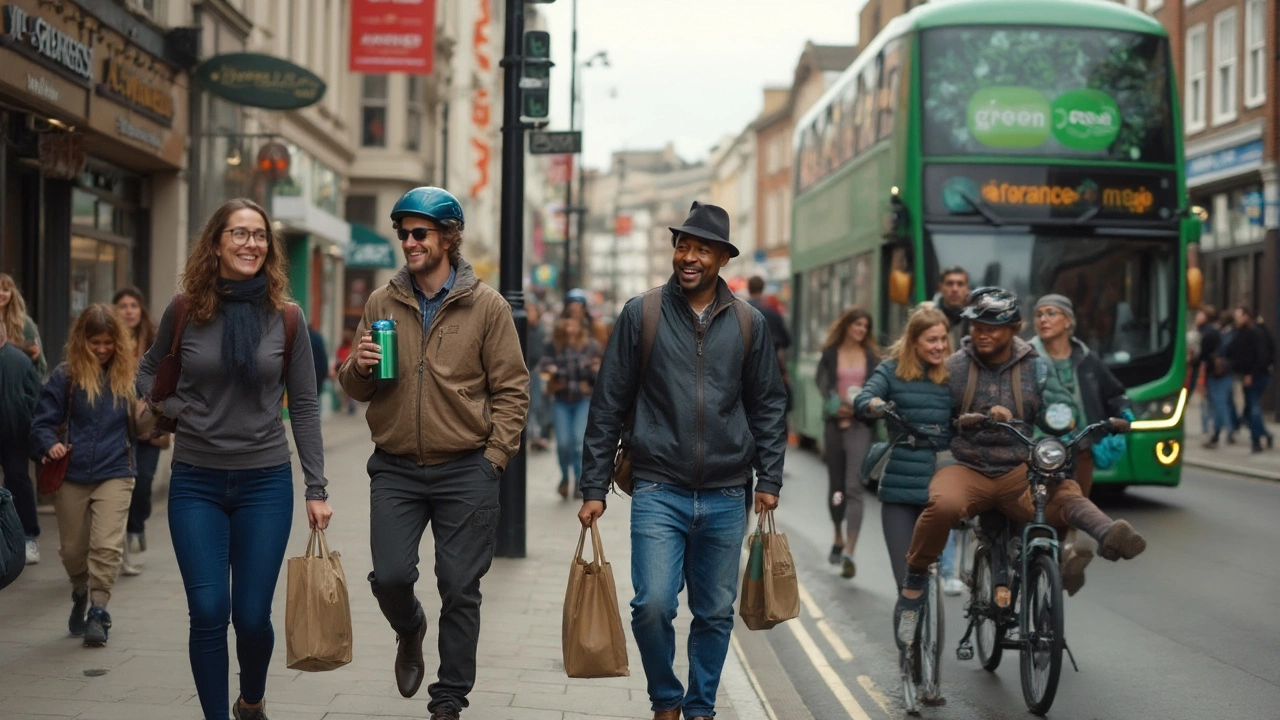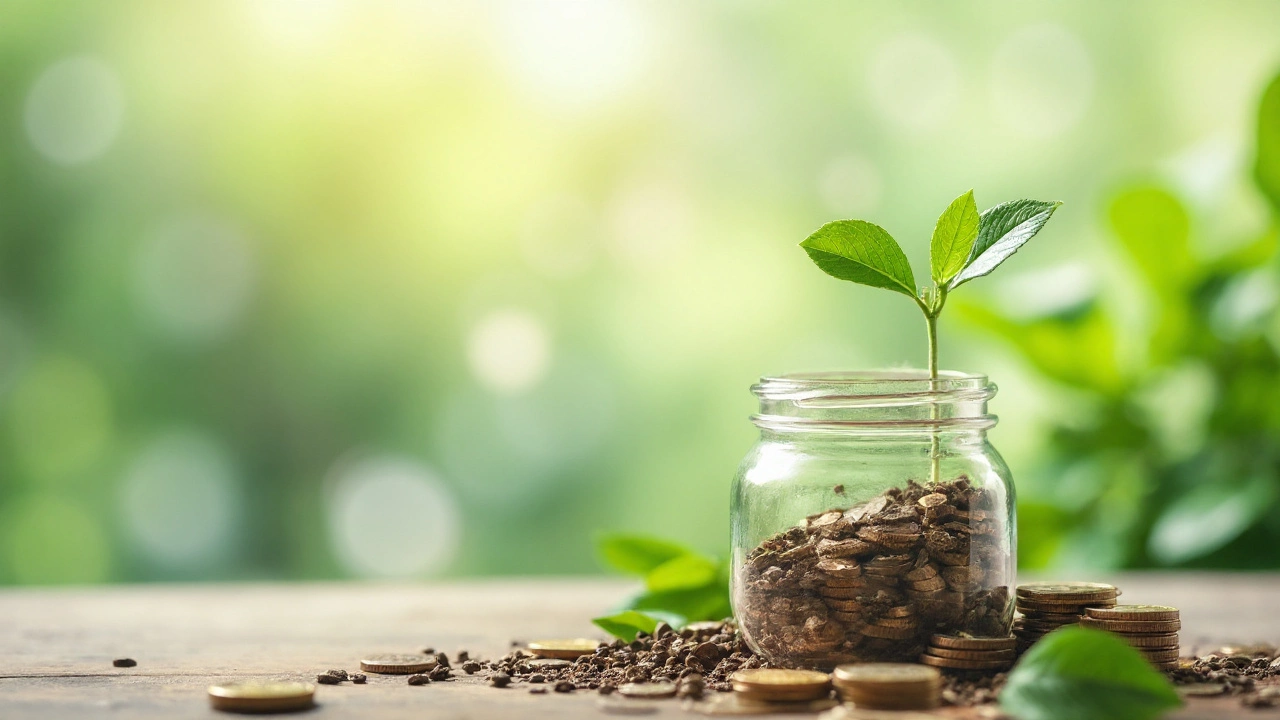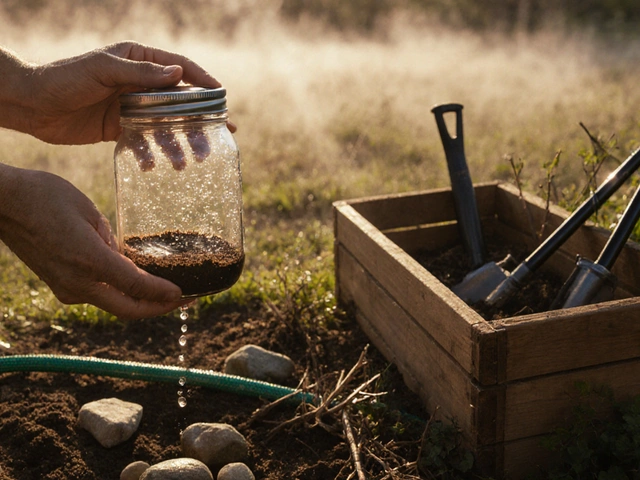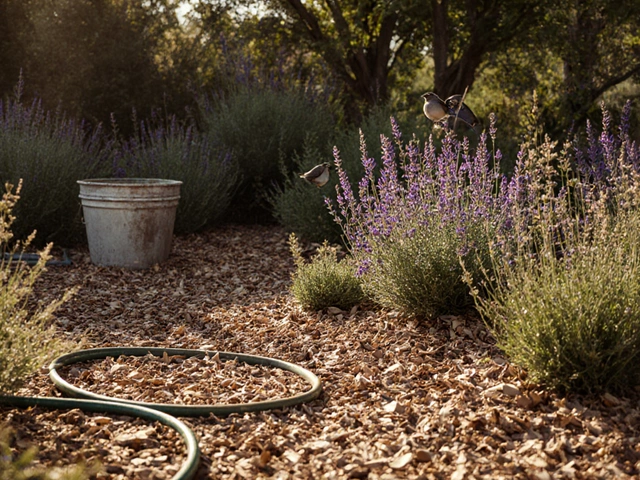If you swapped everything in your shopping basket today for eco-friendly versions, would it actually do much? Most people imagine “green” products just cost more or just come with brown packaging and a side of guilt-tripping. But the truth is, the minute you start making sustainable choices, those ripples run through your daily routines, your local air, your budget, and even your sense of well-being. There are some wild, real-life surprises to discover—like the shampoo bottle that saves enough energy to stream a whole season on Netflix or the laundry tabs that quietly shrink your asthma risk. And that’s just the start.
How Eco-Friendly Products Impact Daily Life
Switching to eco-friendly products isn’t about radical sacrifice or living in discomfort—sometimes, it’s the small swaps that add up in surprising ways. Think about your morning routine. You brush your teeth with a bamboo toothbrush, sip coffee from a reusable cup, and toss on clothes made from organic cotton. On the surface, not much seems different. But under the radar, the health effects, quality of your home environment, and even your motivation to care about your surroundings start to shift.
Let’s talk air, for starters. Traditional cleaning sprays release something called volatile organic compounds (VOCs), which make your air a tad less fresh, sometimes leading to headaches or worse for people with allergies. Making the jump to plant-based detergents slashes VOCs by 90%. That means the air in your kitchen or bathroom is cleaner, and you’re less likely to get those mysterious, post-cleaning headaches. Allergies? Asthma? Your symptoms could quietly calm down just because you ditched harsh chemicals.
The bathroom isn’t immune, either. Switching to eco toilet paper, which uses less bleach and doesn’t rely on old-growth trees, reduces irritants for people with sensitive skin. If you use reusable menstrual products, you’re dodging the plasticizers and perfumes found in regular pads and tampons—no small favors for your body.
There’s another sneaky benefit to sustainable swaps: lowering the heat on your electricity bill. Eco-friendly appliances, like Energy Star-rated fridges or LED bulbs, pull down your home’s power draw. In fact, the average European household that switches to efficient lighting saves around €110 per year (that’s about $120 at today’s rates). Even popcorn nights add up: one LED bulb running four hours daily saves enough energy yearly to power your microwave for 12 hours straight.
Don’t forget food. Purchasing organic, seasonal produce cuts down exposure to synthetic pesticides in your home, and swapping single-use plastic wraps for washable beeswax wraps means less plastic in your kitchen and less in your trash bin. A recent survey in Germany found that the average city dweller who switched to reusable water bottles saves an estimated 50kg (over 100lbs) of plastic from landfill just with their weekly habit at work.
So, flip that story you’ve heard that eco-friendly living is out of reach or too hard. It’s a toolbox. Once you see all these small levers, you start to realize how much power you have to control not just the planet’s future—but your daily comfort, health, and costs, too.
Environmental Benefits: More Than Just Marketing Hype
People get skeptical. All those green labels and leaf logos can blur together, and marketing teams are pretty good at making “sustainable” look cute. But when you look at real impact, eco-friendly products can punch above their weight—if you know what to look for. Real change comes when millions of individual choices add up.
Let’s talk trash. Did you know the average American family throws away about 500 Ziploc-style bags a year? Swap those for silicone or fabric sandwich bags, and you can slash this pile to nearly zero. That’s not just a drop in the ocean: if all U.S. households swapped once a week, it would keep over 2 billion plastic bags off the planet every year.
Then there are the CO2 savings. A single load of laundry using cold water and an eco-friendly detergent emits nearly 60% less CO2 than a typical hot cycle with traditional detergent. In the UK, if every household made that switch for just one load per week for a year, it would be like taking 250,000 cars off the road. And those biodegradable cleaning products? They make it through water treatment plants much more easily, meaning less microplastic and fewer toxic chemicals sneak into rivers and oceans.
The shift to sustainable packaging matters even more. Fast facts: Glass and aluminum are infinitely recyclable, while only 9% of all plastic ever made has been recycled. Eco packaging companies are finally catching on, with brands switching to refillable pouches and compostable wrappers for shampoo, toothpaste, and snacks. (Look for a little “home compostable” symbol if you’ve got a backyard composter—it matters because “industrial compostable” won’t break down unless it’s in a special facility.)
| Traditional Product | Eco-Friendly Alternative | Waste Saved Annually (avg) |
|---|---|---|
| Paper Towels | Reusable Cloths | Over 100 rolls/family |
| Plastic Wrap | Beeswax Wraps | 30 rolls/person |
| Bottled Soap | Bar Soap, Refill Packs | 20 bottles/person |
| Single-Use Razors | Safety Razors | 40 razors/person |
Deforestation and water use both drop when you swap paper products, too. Bamboo grows up to a meter a day, so bamboo-based toilet paper and tissues regenerate way faster, using a fraction of the water and no pesticides. If you use recycled paper, you’re also saving around 7,000 gallons of water per ton compared to virgin product. Crunchier facts: switching just your family’s printer paper to recycled for a year can save about 24 trees and enough energy to power a home for six months.
Eco-friendly doesn’t have to mean perfect, either. Even swapping out just half your disposable products for greener ones makes a measurable difference. Every little bit, multiplied by millions of small acts, stacks up fast.

Health and Wellbeing: Subtle Yet Lasting Rewards
One of the most overlooked payoffs of going green isn’t just about the planet—it’s what happens inside your own body. Traditional cleaning agents, fragrance sprays, and even some cheap beauty products fill your air with hidden chemicals. The thing is, our bodies aren’t built to break down synthetic compounds like phthalates and parabens, which can end up in the bloodstream after repeated use.
A Yale study in 2023 tracked families who switched to plant-based cleaning products for eight weeks. They saw a 40% drop in indoor VOCs, and 60% of participants reported fewer headaches, less coughing, and better sleep. You might think you’ve just developed a “sensitive nose” or mild asthma, when the real culprit could be last week’s multi-surface spray. Air quality monitors, now easily available, often show a real difference within a week of the switch.
Kids and pets benefit the most. Young children’s developing brains and lungs are vulnerable to the traces of bleach, ammonia, and synthetic fragrance found in many cleaning and laundry products. Pets like cats and dogs breathe closer to the floor and absorb chemicals straight through their paws. Swapping to eco-cleaners and natural floor sprays can actually increase puppies’ and toddlers’ playtime, which says a lot about background comfort levels—something you might never realize until you see it change.
And don’t underestimate the indirect effects. Cooking with sustainable, organic ingredients often means more vegetables and whole grains, whether you planned it or not. People who buy organic report eating up to 3 more servings of fresh food each week than before. If pesticides and artificial additives have made you itchy or gassy—or you’ve just felt sluggish after processed snacks—you might notice your energy picks up because your body isn’t fighting off random chemicals.
Eco clothing choices can actually help certain skin conditions. Ever felt itchy or rashy after wearing synthetic fabrics for too long? That’s not just bad luck: polyester and rayon sometimes trap heat and sweat, while organic cotton and linen “breathe” better. Companies like Pact and Allbirds use low-impact dyes and untreated materials, which translates to fewer allergy flare-ups. (Bonus: less static shock in winter!)
Switching your makeup, body lotion, and shampoo to trustworthy green brands helps restore your skin’s baseline and brings surprising peace of mind, too. No more deciphering mystery ingredients or worrying what might break you out. You start to trust what you’re using, and that weird cloud of anxious “what if this is bad for me?” slowly goes away.
Eco-Friendly Choices and Your Wallet
Here’s the honest scoop on money and eco-friendly products: sometimes, yes, they can cost more up front. But once you build the habit, the “expensive” label often melts away—and, in some cases, can actually mean big savings over the long haul.
Take reusable shopping bags. Most cost $2-4 each, but store policies now often knock off small amounts for every bag you bring, plus you dodge that awkward 10-cent fee for bringing home more plastic. Over a year, the math adds up, but the real savings hide elsewhere: look at water bottles, razors, and cleaning sprays.
Say you spend $20 today for a steel water bottle. Single-use plastic bottles average $1.25 each at a convenience store. If you buy just two bottles a week at work, you’ve “paid off” your metal bottle in eight weeks—and saved about $120 in one year.
| Product | Conventional Cost (Year) | Eco-Friendly Cost (Year) | Savings |
|---|---|---|---|
| Water Bottles | $130 | $20 | $110 |
| Menstrual Pads/Tampons | $75 | $35 (cups/discs) | $40 |
| Razors | $50 | $20 (plus blades) | $30 |
| Laundry Detergent | $80 | $50 (strips) | $30 |
Bigger swaps, like LED bulbs or water-saving showerheads, can net you $100 or more in utility savings each year. Solar-powered chargers or backyard composters might cost more up front but are a one-time purchase instead of a continuous drip. The hidden bonus: you buy less, throw out less, and need fewer emergency “oops, I’m out” trips to the store.
If you love clothes, fast fashion is both a wallet trap and an environmental problem. Picking up secondhand or investing in just a few high-quality, eco brands means you’re less likely to blow $20 here or there every week—even if a quality tee costs a bit more, you won’t need to replace it every season.
Some insurance companies even give discounts for sustainable home improvements, like better insulation or rainwater tanks. And neighborhood grocers now run loyalty points for those who bring reusable produce bags or buy from bulk bins. Eco-living isn’t some badge to show off on Instagram, but it totally levels up your “stuff costs” over time.

Tips for Making the Switch: Where to Start If You’re New
Going eco doesn’t need to be a zero-to-hero thing. The key is starting where it feels easiest or most interesting to you, and building up from there. Here’s how to get going without stress or overwhelm.
- Pick one room. Start in the kitchen with swapping out plastic wrap for beeswax covers, or in the bathroom with a bamboo toothbrush and bar soap. Tiny bite-sized changes stick best.
- Focus on what you use up most. For some people, it’s cleaning sprays or paper towels. Challenge yourself: could you shrink your weekly trash by half with just one swap?
- Join a buy-nothing or local swap group. Trading clothes, kitchen gadgets, or kids’ toys with neighbors cuts down packaging and keeps stuff out of landfills.
- Check the label for credible third-party certifications, not just green leaves or “Earth” in the brand name. Look for things like “USDA Organic,” “Cradle to Cradle,” or “ECOCERT.” If you’re in Europe, “EU Ecolabel” is gold-standard.
- Share your swaps. People often try new products because they see friends loving them. If you enjoy your zero-waste deodorant or refillable makeup, tell someone—it sparks more change than you’d think.
- Watch your wallet. If a green product is out of your price range, look for DIY recipes—homemade cleaners (baking soda and vinegar!) or beeswax wraps you can make yourself save serious cash.
- Go slow. Don’t toss what you already own—finish up old products, then replace with eco-friendly options as you run out.
- Keep your eyes open for new brands. Entire supermarket aisles are filling up with green products as demand soars. Even big names like Unilever and Procter & Gamble now offer entire lines of eco soaps and laundry strips.
The more you pay attention—and try even small changes—the easier it gets. And don’t sweat perfection. Half the fun is learning what works best for your life, your health, and your planet—all without getting overwhelmed or discouraged by that little green-halo effect marketers love. You call the shots, and every single swap you make gets us all a step closer to a world that just feels and works better. And honestly, who doesn’t want that?







